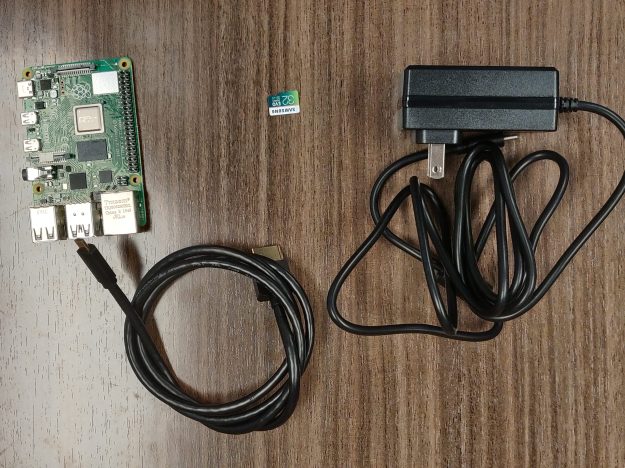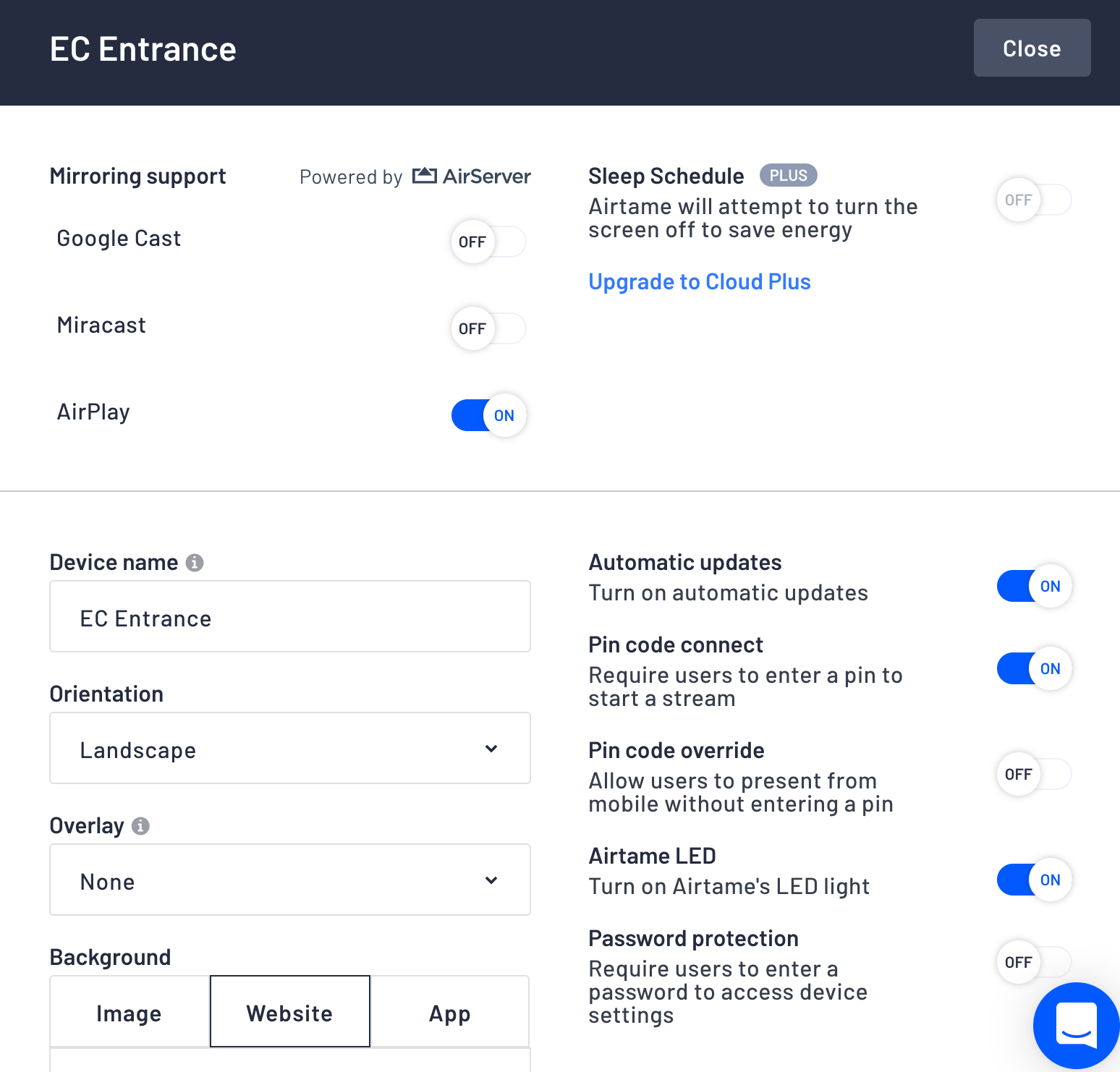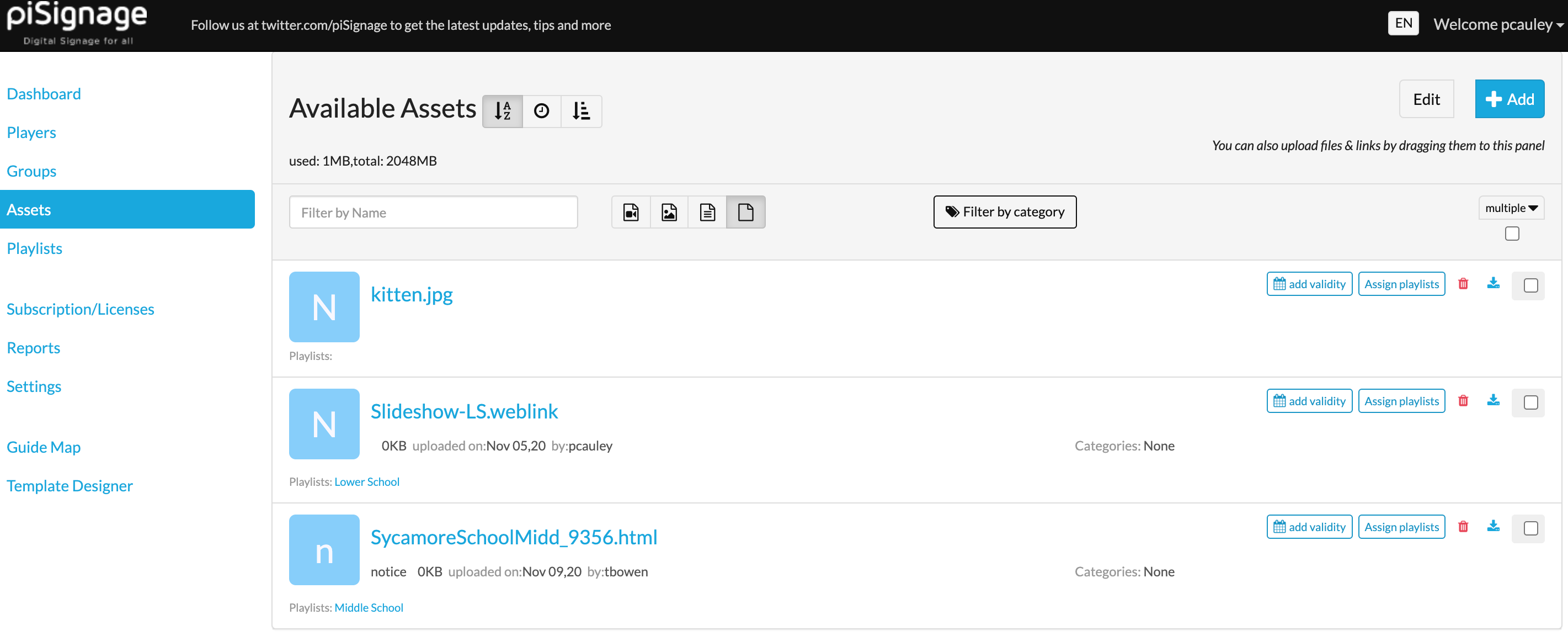pisgnage.com – Digital signage on the cheap

Schools are looking for ways to better communicate with their community inside the school as well as outside. One way to do this is with digital signage. This can helpful for a bunch of reasons:
- Sharing the menu for lunch
- Birthday greetings
- Local sports news
- Reminding students of deadlines
- Reminding students of school activities
- General news (weather, local, state, national/international news)
- The joke of the day
- And much, much more!
The set up isn’t too crazy. You need a screen to display the information on and you need a player to directly connect to the screen that acts as the brains of the operation, but I only wish it was that easy.
Logistical problems
There are a few here. The first is what type of player do you want to connect to the screen? This could be anything from a professional player like Navori or using an old computer that you have laying around. If you have a screen or two you probably could get away using an old computer that you hide away somehow and connect to the screen. You can update weekly or have students update it.
If you have multiple screens then you may want a more networked approach. This means that you have multiple players but you must use software to remote manage them. An issue here is that you usually have to pay quite a bit (usually hundreds of dollars) for each player and then you need to pay an annual subscription for the ability to manage the players. It gets pricey and worst of all, stays pricey.
One service that works really well is Airtame (read my review of Airtame 2 here). What is nice is that you pay up front for the player (Airtame 2 = $400) and then you get a cloud dashboard to manage them for free. There is a more robust cloud platform ($10/device/month) but I found that for our needs it is very adequate.
The problem with Airtame is that each player costs $400 USD each!! That is a lot of money for us to put up for a player that mostly plays a Google slideshow.
pisignage.com
So we went for more cost effective solutions and we think we’ve found one. Using a Raspberry Pi 4 and a service called pisignage.com we think we have found what we are looking for and for a price we are comfortable with.

pisigange.com will let us transform two raspberry pi’s into digital signage players and also allow us to manage them through their cloud service for free! If we want to manage more we need to play for a license fee ($25 one time) and an annual subscription fee for each player.
So, let’s do some math. Let’s say you have 5 screens around your school that you want to use as digital signage. Let’s take a look at Airtame. (Also, tax is not included).
- Airtame = $400/player times 5 players = $2000 one time cost and no annual cost (if you use their free cloud option)
- Pisignage.com = $100/Raspberry pi (I am including a power brick, HDMI cable and SD card and rounding way up too) times 5 players + 3 licenses and cloud management fees (the first two players and cloud subscriptions are free forever) = $500 for the hardware and $105 for the three player licenses and the first year subscription, So that runs to a total of $605 for the initial cost with an additional $60/year after that for the annual subscription.
As you can see, this is much, much cheaper than the Airtame and I like to think the Airtame is pretty reasonable, but as you can see for the Raspberry Pi route, it will take quite a few years to hit that $1500 cost that Airtame will charge you.
Also pisignage.com is not too difficult to figure out, but it is definitely not as user friendly as Airtame’s cloud dashboard. Click on the images for a larger view.
No brainer right?
Not quite.
Airtame may be a little pricey but it is a pretty polished product. You’re not just paying them for the hardware but also for their great cloud management and wonderful support. Getting content on Airtame is very easy and getting it to look good is just as easy.
Pisignage isn’t exactly hard but we do notice that the Airtame does work a little better and produces a better, sharper looking image.
If you like to tinker though – then it is a no brainer. Pisignage is definitely the way to go. There are a variety of different layouts you can use, you have scheduling options and can rotate through a number of playlists and even schedule playlists to start playing at certain times.
If you want very little set up time and allow others to easily add content to your signage then Airtame may be worth the extra cost. Also, Airtame has great customer service. They are fast, professional and very helpful.
I haven’t used pisignage.com’s support yet, but what you often find with open source projects is development to fix bugs doesn’t happen too quickly and support is often lacking a little. The community pages seem to have quite technical answers as opposed to a rep looking at your device via the cloud and hold your hand as you troubleshoot it.
Also, the Raspberry Pi comes to you naked as a bluejay. You’ll want to either 3D print a case or buy one for it. Not too expensive either way but something you should be aware of. Whereas the Airtame 2 is completely sealed up and has mounting options.
So far so good
One advantage the Raspberry Pi’s have over Airtame 1 (probably not 2) is that it is a more powerful device. With 4GB of RAM onboard the Raspberry Pi starts up pretty quickly and seems to handle content we throw at it pretty well.
Also, the cloud service offers far more flexibility than the free Airtame cloud service. We can add YouTube videos, do schedules and stack up various assets. For Airtame, you need to pay $10/month/device to get those features. Pisignage.com only charges you $20/device/year (after the first two which are free).
Like I said, we are just pushing out a Google Slideshow to these signs and while things are going well now -who knows what the future holds.
If things do go pear shaped, all is not lost. We still have a functioning Raspberry Pi that we can tinker with and use for student projects. If the Raspberry Pi itself fails or is damaged beyond repair, then we can reassign that license to another Raspberry Pi and replace it quite easily for less than $100.
For our needs though, pisignage.com and the Raspberry Pi ticks all the boxes.
Source: IT Babble Blog and Podcast





You must be logged in to post a comment.